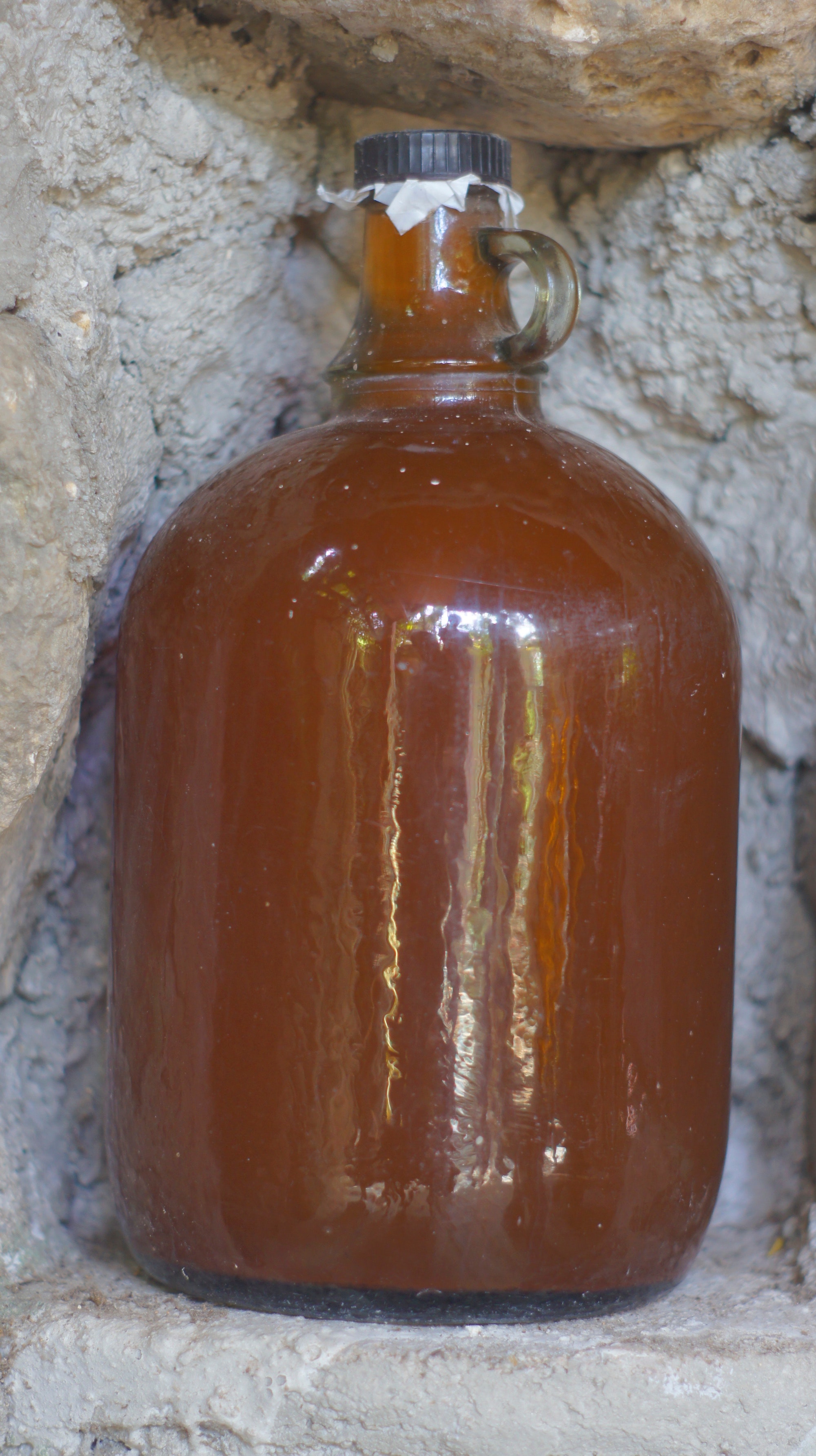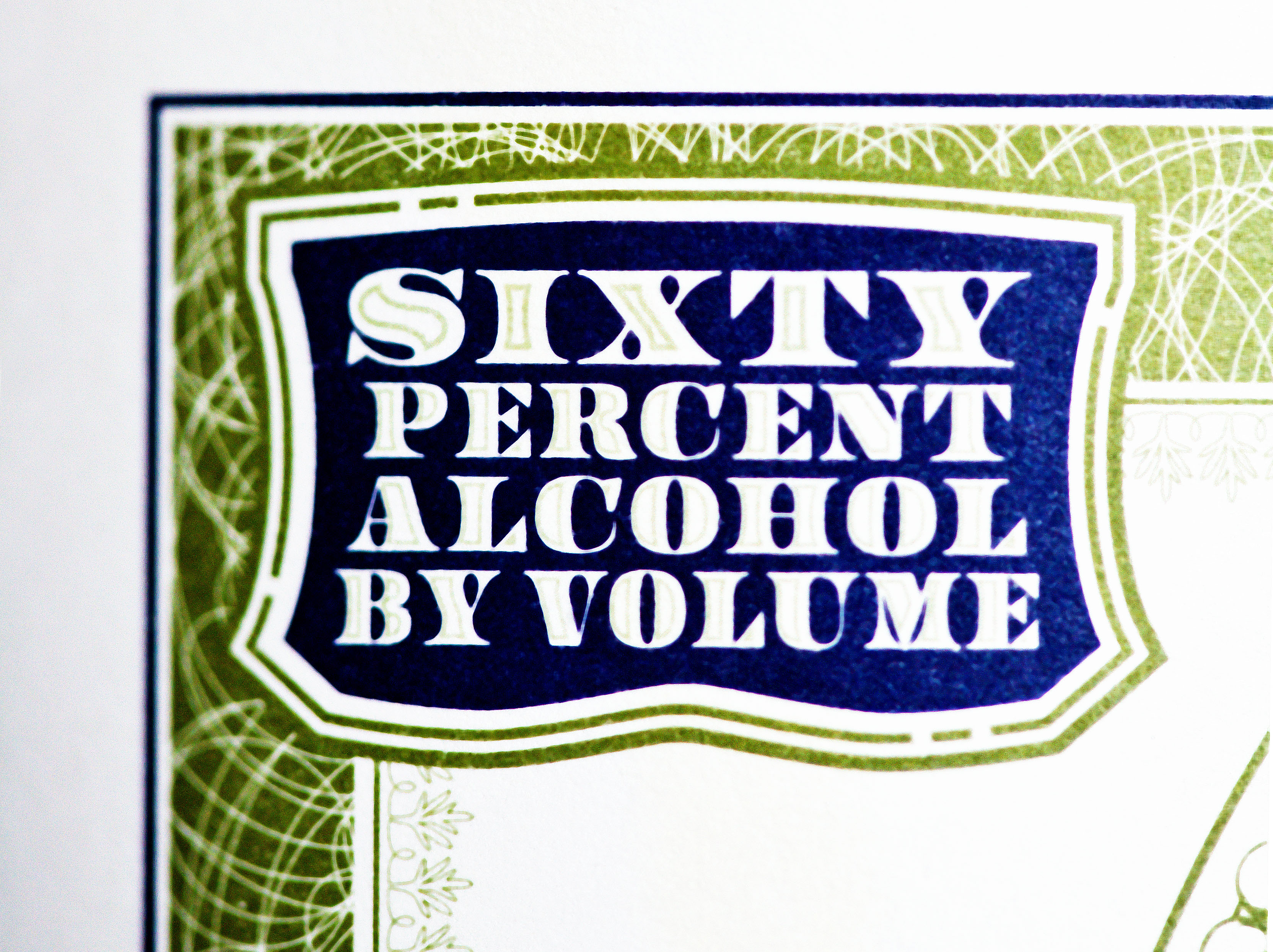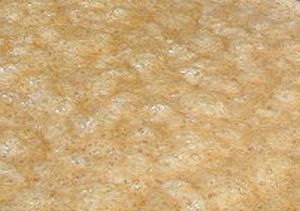|
Bahalina
Bahalina, sometimes called "coconut red wine", is a traditional Filipino palm wine made from fermented coconut or nipa palm sap. It is derived from tubâ (palm toddy) that has been aged for several months to several years. It originates from the Visayas and Mindanao islands of the southern Philippines. It is deep brown-orange in color and has a slightly bitter astringent taste. Description Bahalina is characteristically deep brown-orange in color due to the use of ''barok'' (also called ''tungog'' or ''tongog''), the extracts from the dried bark (''marka tungog'' or ''tangal'') of certain mangrove species ('' Ceriops tagal'', ''Rhizophora mucronata'', or '' Vateria indica''). The tannin-rich extracts prevent bahalina from souring, as well as adding a slight bitterness to the flavor. Bahalina differs from the lambanog of Luzon in that lambanog is distilled and does not use ''barok'' and is thus milky-white or clear in color. Bahalina has around 10% to 13% abv (20 to 26 proof ... [...More Info...] [...Related Items...] OR: [Wikipedia] [Google] [Baidu] |
Lambanog
Lambanóg is a traditional Filipino distilled coconut palm liquor. It is derived from tubâ made from coconut sap that has been aged for at least 48 hours. It originates from Luzon and the Visayas Islands (where it is known as ''dalisay de coco''). During the Spanish colonial period, it was also known as ''vino de coco'' in Spanish. It is also commonly described as "coconut vodka" due to its clear to milky white color and high alcohol content. It is particularly potent, having a typical alcohol content of 80 to 90 proof (40 to 45% abv) after a single distillation; this may go as high as 166 proof (83% abv) after the second distillation. Its smoothness has been compared to that of Japanese sake and European schnapps. A similar distilled drink made from nipa palm sap is known as ''laksoy''. History Tubâ, a kind of palm wine, existed in the Philippines before colonisation. They were widely consumed for recreation and played an important role in various religious rituals. He ... [...More Info...] [...Related Items...] OR: [Wikipedia] [Google] [Baidu] |
Coconut
The coconut tree (''Cocos nucifera'') is a member of the palm tree family (Arecaceae) and the only living species of the genus ''Cocos''. The term "coconut" (or the archaic "cocoanut") can refer to the whole coconut palm, the seed, or the fruit, which botanically is a drupe, not a nut. The name comes from the old Portuguese word '' coco'', meaning "head" or "skull", after the three indentations on the coconut shell that resemble facial features. They are ubiquitous in coastal tropical regions and are a cultural icon of the tropics. The coconut tree provides food, fuel, cosmetics, folk medicine and building materials, among many other uses. The inner flesh of the mature seed, as well as the coconut milk extracted from it, form a regular part of the diets of many people in the tropics and subtropics. Coconuts are distinct from other fruits because their endosperm contains a large quantity of clear liquid, called '' coconut water'' or ''coconut juice''. Mature, ripe co ... [...More Info...] [...Related Items...] OR: [Wikipedia] [Google] [Baidu] |
Lambanog
Lambanóg is a traditional Filipino distilled coconut palm liquor. It is derived from tubâ made from coconut sap that has been aged for at least 48 hours. It originates from Luzon and the Visayas Islands (where it is known as ''dalisay de coco''). During the Spanish colonial period, it was also known as ''vino de coco'' in Spanish. It is also commonly described as "coconut vodka" due to its clear to milky white color and high alcohol content. It is particularly potent, having a typical alcohol content of 80 to 90 proof (40 to 45% abv) after a single distillation; this may go as high as 166 proof (83% abv) after the second distillation. Its smoothness has been compared to that of Japanese sake and European schnapps. A similar distilled drink made from nipa palm sap is known as ''laksoy''. History Tubâ, a kind of palm wine, existed in the Philippines before colonisation. They were widely consumed for recreation and played an important role in various religious rituals. He ... [...More Info...] [...Related Items...] OR: [Wikipedia] [Google] [Baidu] |
Palm Wine
Palm wine, known by several local names, is an alcoholic beverage created from the sap of various species of palm tree such as the palmyra, date palms, and coconut palms. It is known by various names in different regions and is common in various parts of Africa, the Caribbean, South America, South Asia, Southeast Asia and Micronesia. Palm wine production by smallholders and individual farmers may promote conservation as palm trees become a source of regular household income that may economically be worth more than the value of timber sold. Tapping The sap is extracted and collected by a tapper. Typically the sap is collected from the cut flower of the palm tree. A container is fastened to the flower stump to collect the sap. The white liquid that initially collects tends to be very sweet and non- alcoholic before it is fermented. An alternative method is the felling of the entire tree. Where this is practised, a fire is sometimes lit at the cut end to facilitate th ... [...More Info...] [...Related Items...] OR: [Wikipedia] [Google] [Baidu] |
Coconut
The coconut tree (''Cocos nucifera'') is a member of the palm tree family (Arecaceae) and the only living species of the genus ''Cocos''. The term "coconut" (or the archaic "cocoanut") can refer to the whole coconut palm, the seed, or the fruit, which botanically is a drupe, not a nut. The name comes from the old Portuguese word '' coco'', meaning "head" or "skull", after the three indentations on the coconut shell that resemble facial features. They are ubiquitous in coastal tropical regions and are a cultural icon of the tropics. The coconut tree provides food, fuel, cosmetics, folk medicine and building materials, among many other uses. The inner flesh of the mature seed, as well as the coconut milk extracted from it, form a regular part of the diets of many people in the tropics and subtropics. Coconuts are distinct from other fruits because their endosperm contains a large quantity of clear liquid, called '' coconut water'' or ''coconut juice''. Mature, ripe co ... [...More Info...] [...Related Items...] OR: [Wikipedia] [Google] [Baidu] |
Palm Wine
Palm wine, known by several local names, is an alcoholic beverage created from the sap of various species of palm tree such as the palmyra, date palms, and coconut palms. It is known by various names in different regions and is common in various parts of Africa, the Caribbean, South America, South Asia, Southeast Asia and Micronesia. Palm wine production by smallholders and individual farmers may promote conservation as palm trees become a source of regular household income that may economically be worth more than the value of timber sold. Tapping The sap is extracted and collected by a tapper. Typically the sap is collected from the cut flower of the palm tree. A container is fastened to the flower stump to collect the sap. The white liquid that initially collects tends to be very sweet and non- alcoholic before it is fermented. An alternative method is the felling of the entire tree. Where this is practised, a fire is sometimes lit at the cut end to facilitate th ... [...More Info...] [...Related Items...] OR: [Wikipedia] [Google] [Baidu] |
Nipa Palm Vinegar
Nipa palm vinegar, also known as ''sukang sasâ'' or ''sukang nipa'', is a traditional Filipino vinegar made from the sap of the nipa palm (''Nypa fruticans''). It is one of the four main types of vinegars in the Philippines, along with coconut vinegar, cane vinegar, and kaong palm vinegar. It is usually sold under the generic label of "palm vinegar". Nipa palm vinegar is listed in the Ark of Taste international catalogue of endangered heritage foods by the Slow Food movement. Along with other traditional vinegars in the Philippines, it is threatened by the increasing use of industrially-produced vinegars. Names Nipa palm vinegar is known as ''sukang sasa'' or ''sukang nipa'' in native languages in the Philippines. Both ''nipa'' and ''sasa'' are the native names of the nipa palm in Tagalog; while ''sukâ'' (with the Tagalog enclitic suffix ''-ng'') means "vinegar". It is also known as ''sukang Paombong'' after the town of Paombong, Bulacan where it is a traditional ind ... [...More Info...] [...Related Items...] OR: [Wikipedia] [Google] [Baidu] |
Alcohol By Volume
Alcohol by volume (abbreviated as ABV, abv, or alc/vol) is a standard measure of how much alcohol (ethanol) is contained in a given volume of an alcoholic beverage (expressed as a volume percent). It is defined as the number of millilitres (mL) of pure ethanol present in of solution at . The number of millilitres of pure ethanol is the mass of the ethanol divided by its density at , which is . The ABV standard is used worldwide. The International Organization of Legal Metrology has ethanol (data page)#Properties of aqueous ethanol solutions, tables of density of water–ethanol mixtures at different concentrations and temperatures. In some countries, e.g. France, alcohol by volume is often referred to as degrees Gay-Lussac (after the French chemist Joseph Louis Gay-Lussac), although there is a slight difference since the Gay-Lussac convention uses the International Standard Atmosphere value for temperature, . Volume change Mixing two solutions of alcohol of different strengths ... [...More Info...] [...Related Items...] OR: [Wikipedia] [Google] [Baidu] |
Kaong Palm Vinegar
Kaong palm vinegar, also known as irok palm vinegar or arengga palm vinegar, is a traditional Filipino vinegar made from the sap of the kaong sugar palm (''Arenga pinnata''). It is one of the four main types of vinegars in the Philippines, along with coconut vinegar, cane vinegar, and nipa palm vinegar. It is usually sold under the generic label of "palm vinegar". Names Kaong palm vinegar is also known as ''sukang kaong'' or ''sukang irok'', from ''kaong'' and ''irok'', the native Filipino name for ''Arenga pinnata''; and ''sukâ'' (with the Tagalog enclitic suffix ''-ng'') means "vinegar". It is also sometimes known as ''sukang tubâ'', from ''tubâ'', the general term for palm toddy produced from various palm trees in the Philippines, including coconut, buri palm ('' Corypha elata''), and nipa palm (''Nypa fruticans''). Traditional production Kaong sugar palms (''Arenga pinnata'') are solitary monoecious palm trees usually found in riverbanks and ravines throughout Southe ... [...More Info...] [...Related Items...] OR: [Wikipedia] [Google] [Baidu] |
Fermentation
Fermentation is a metabolic process that produces chemical changes in organic substrates through the action of enzymes. In biochemistry, it is narrowly defined as the extraction of energy from carbohydrates in the absence of oxygen. In food production, it may more broadly refer to any process in which the activity of microorganisms brings about a desirable change to a foodstuff or beverage. The science of fermentation is known as zymology. In microorganisms, fermentation is the primary means of producing adenosine triphosphate (ATP) by the degradation of organic nutrients anaerobically. Humans have used fermentation to produce foodstuffs and beverages since the Neolithic age. For example, fermentation is used for preservation in a process that produces lactic acid found in such sour foods as pickled cucumbers, kombucha, kimchi, and yogurt, as well as for producing alcoholic beverages such as wine and beer. Fermentation also occurs within the gastrointestinal tra ... [...More Info...] [...Related Items...] OR: [Wikipedia] [Google] [Baidu] |
Carboy
A carboy, also known as a demijohn or a lady jeanne, is a rigid container with a typical capacity of . Carboys are primarily used for transporting liquids, often water or chemicals. They are also used for in-home fermentation of beverages, often beer or wine. History and etymology The word ''carboy'' is from the Persian ''qarābah'' ( قرابه), from Middle Persian ''Karāvah''. Arabic also borrowed it as ''qarrāba'', meaning "big jug". The Spanish-language term is ''garrafa''. ''Demijohn'' originally referred to any glass vessel with a large body and small neck, enclosed in wickerwork. The word presumably comes from the French ''dame-jeanne'', literally "Lady Jane", as a popular appellation; this word is first attested in France in the 17th century. In Italian it is called ''damigiana'', most probably derived from French. In some Spanish-speaking countries such as Argentina, it is also referred to as ''damajuana''. An alternative etymology derives it from the name o ... [...More Info...] [...Related Items...] OR: [Wikipedia] [Google] [Baidu] |
Visayas
The Visayas ( ), or the Visayan Islands ( Visayan: ''Kabisay-an'', ; tl, Kabisayaan ), are one of the three principal geographical divisions of the Philippines, along with Luzon and Mindanao. Located in the central part of the archipelago, it consists of several islands, primarily surrounding the Visayan Sea, although the Visayas are also considered the northeast extremity of the entire Sulu Sea. Its inhabitants are predominantly the Visayan peoples. The major islands of the Visayas are Panay, Negros, Cebu, Bohol, Leyte and Samar. The region may also include the provinces of Palawan, Romblon, and Masbate whose populations identify as Visayan and whose languages are more closely related to other Visayan languages than to the major languages of Luzon. There are three administrative regions in the Visayas: Western Visayas (pop. 7.9 million), Central Visayas (8 million) and Eastern Visayas (4.5 million). The Negros Island Region existed from 2015 to 2017, separating ... [...More Info...] [...Related Items...] OR: [Wikipedia] [Google] [Baidu] |

.png)







